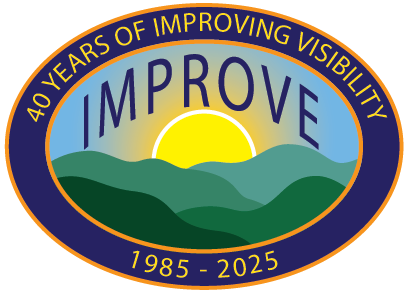The NPS/CIRA Final BRAVO Report
Big Bend Regional Aerosol and Visibility Observational (BRAVO) Study Results
The National Park Service (NPS) and Cooperative Institute for Research in the Atmosphere (CIRA) conducted a number of analyses to understand the physical and optical properties of haze and the contributions of source regions to Big Bend’s sulfate and haze. The source apportionment studies incorporated airmass history analyses, receptor modeling and Eulerian source oriented modeling. All source apportionment techniques and models were evaluated and validated against measured data, perfluorocarbon tracer data, and synthetic data generated from models. In addition, an extensive reconciliation of source attribution results was conducted. The reconciliation involved identifying biases in all techniques and developing a hybrid source attribution technique merging air quality data and modeling results to minimize these biases. NPS and CIRA believe these are the best available source attribution results and accurately reflect the contributions of different source regions in the United States and Mexico to Big Bend’s particulate sulfate and haze during the BRAVO study period. The implications of these results are also discussed in the report.
Principal Authors: Bret A. Schichtel,1 Kristi A. Gebhart,1 Michael G. Barna,1 William C. Malm,1 Derek E. Day2, Sonia Kreidenweis,3 Jeffrey Collett, Jr.3
1. National Park Service (NPS)
2. Cooperative Institute for Research in the Atmosphere (CIRA)
3. Colorado State University (CSU)
Click on the title below to view PDF files of these documents:
NPS/CIRA Final BRAVO Report (28.7 mb) – The entire report except for appendices 4b, 4c, 4d and 8b
The BRAVO Report by Chapter and Appendices
Title Page and Table of Contents (150 Kb)
BRAVO Background and Summary of Findings Fact Sheet (30 Kb)
Ch 2. Ambient Monitoring Method, Air Quality Models and Source Apportionment Methods (1 mb)
Ch 3. Big Bend’s Aerosol and Extinction Budgets during BRAVO (1 mb)
Ch 5. Forward Model Simulation of BRAVO Tracer Concentrations (350 Kb)
Ch 6. REMSAD Sulfur Simulation and Apportionment for BBNP (1.8 mb)
Ch 7. Receptor Model Evaluation (1 mb)
Ch 8. Receptor Oriented Apportionment for BBNP (4.5 mb)
Ch 9. Reconciliation of Source Apportionment Results and Conclusions (250 Kb)
Appendix 2a: Radar Wind Profiler Data (1.5 mb)
Appendix 2b: Surface Meteorology (50 kb)
Appendix 4a: Comparison of MM5, EDAS, and FNL Winds to Radar Wind Profiler Winds (150 Kb)
Appendix 4b: CAPITAMC Back Trajectories (12 mb)
Appendix 4c: HYSPLIT Back Trajectories (6 mb)
Appendix 4d: ATAD Back Trajectories (4 mb)
Appendix 6a: Performance Statistics: BRAVO Monitors (170 kb)
Appendix 6b: Predicted and Observed SO2, SO4, and Total Sulfur Time Series: BRAVO Monitors (150 kb)
Appendix 6c: Performance Statistics: CASTNet Monitors (300 kb)
Appendix 8a: Summary Statistics for BRAVO Monitoring Data (1.5 mb)
Appendix 8b: Daily Map of Fine Particulate Sulfur Concentrations (2 mb)
Appendix 8c: Airmass Transport to Big Bend, Texas, during Each Particulate Sulfur Episode (1 mb)

